Can Betta Fish and Goldfish Live Together?
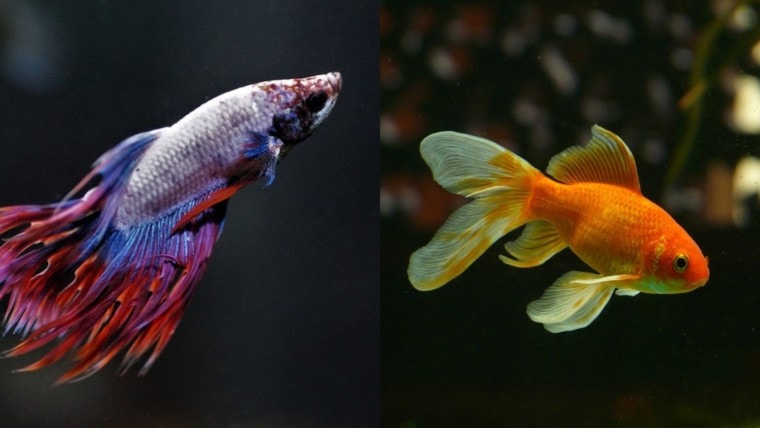
Bettas and goldfish are every aquarium enthusiast’s favorite pet fish species. So, it’s normal to get a betta and think of pairing it with a goldfish because, why not?
Well, betta fish and goldfish love interacting with people, and people love them back, but that’s where their similarities end. Betta fish species are reputably fierce, while goldfishes are chilled out. While this arrangement appears like the best match-making, housing them together is a recipe for disaster.
There’s more to why the two fish species can’t be roommates besides their temperaments. Read on to find out why bettas and goldfish aren’t the most compatible tank-mates after all.

Betta Fish and Goldfish
Bettas and goldfish are highly-prized fish species in the aquarium trade. They are favorite pets, especially among kids, thanks to their flowing beauty and ease of care more than kitties and dogs. But that’s it!
These fishes are two completely different species, from their care requirements to temperaments. So take a closer look at the two to find out what makes them so different that they can’t be paired.
Goldfish
The Goldfishes you see in pet stores are distant relatives to a species of wild Prussian carp originating from Central Asia. Word has it that there are around 125 goldfish varieties, all of which developed through intensive hybridization and captive crossbreeding.
Unlike bettas that are still found living in nature, there are no recognized wild goldfish.
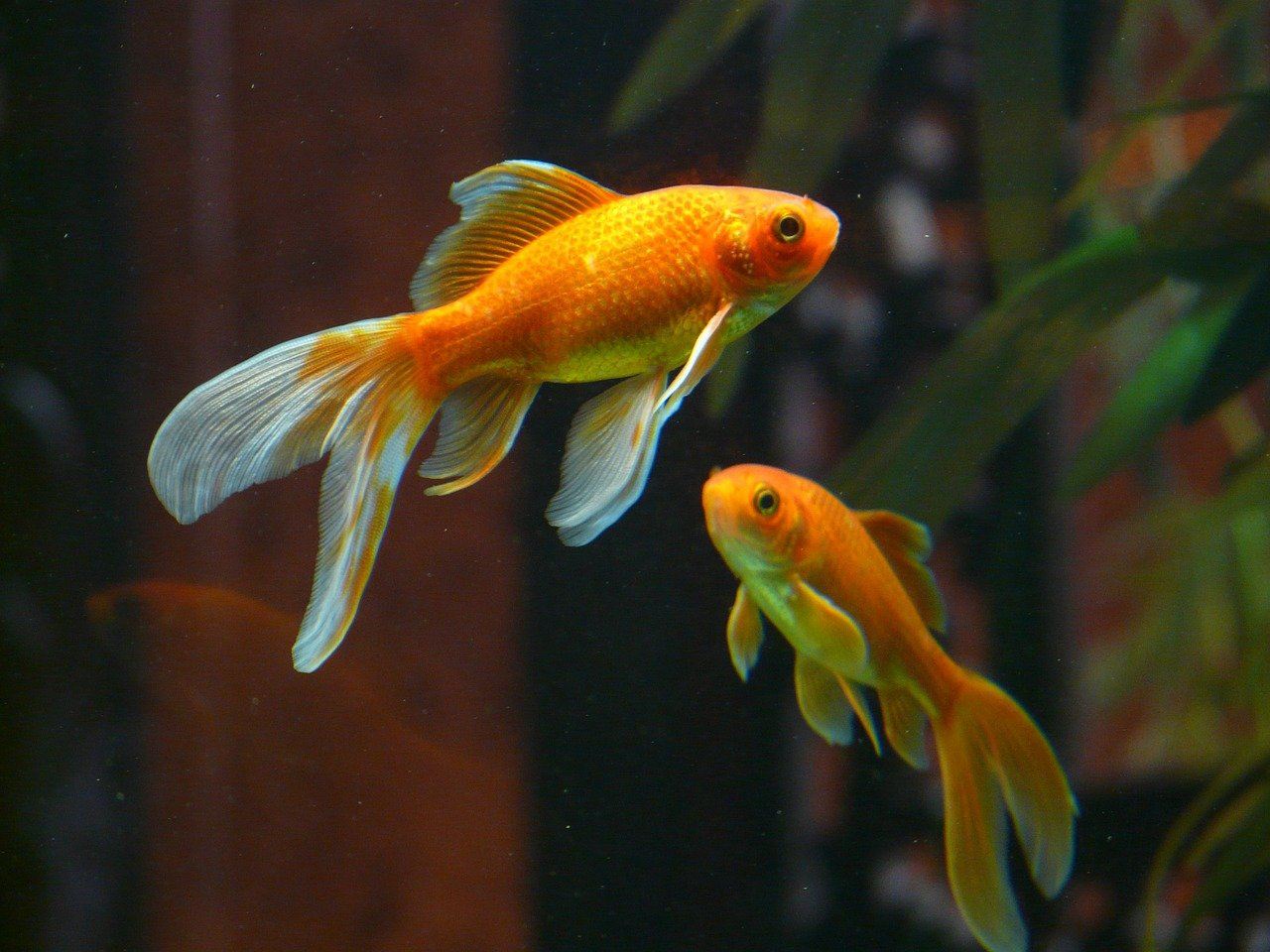
Betta Fish
Bettas are members of the Osphoromidae tropical fish family native to Southeast Asia. You can find about 73 betta fish varieties, primarily bred in captivity and intensely hybridized to create glamorous finnage and spectacular colors most fish fanciers covet.
These pet fishes exist in the wild, unlike the artificially bred goldfish.
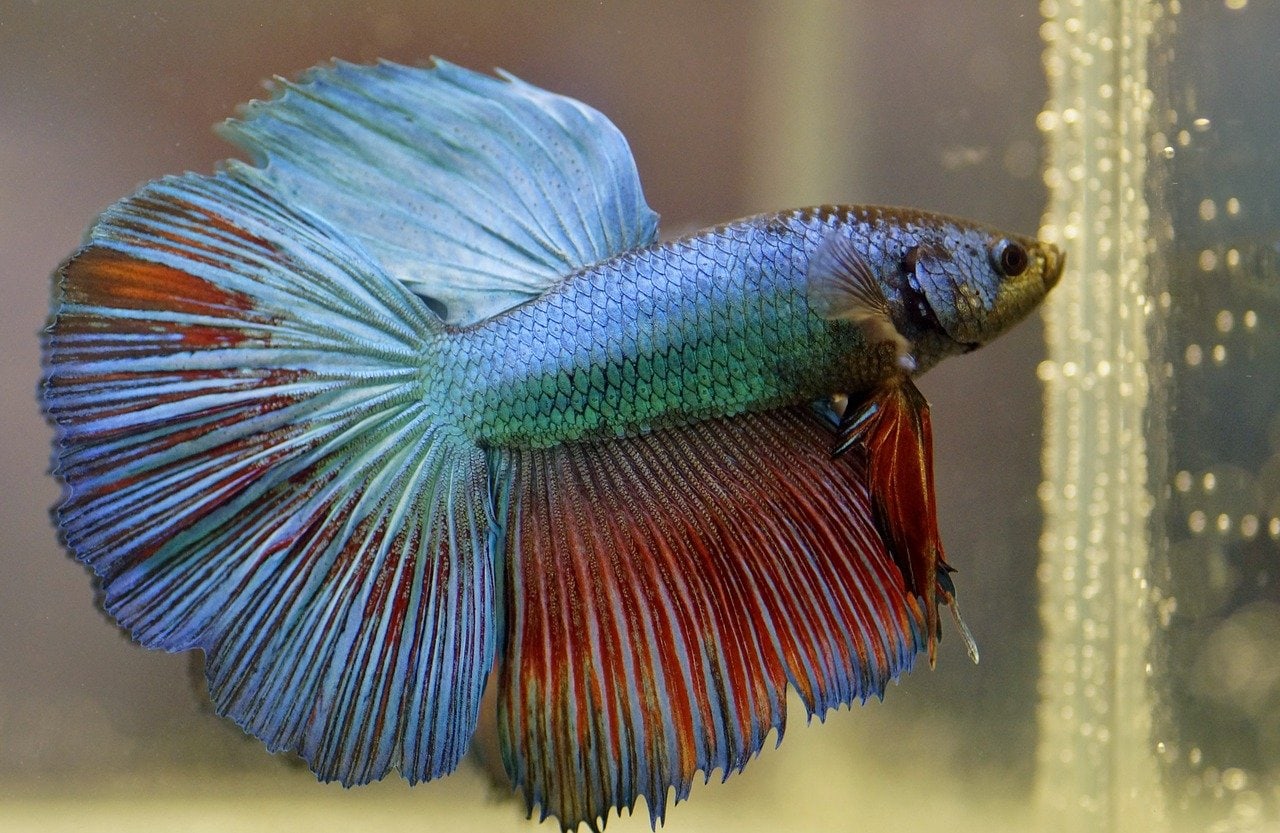
8 Reasons Why Betta Fish and Goldfish Shouldn’t Live Together
1. Temperaments
Bettas are also known as the “Siamese Fighting Fish” for some good reason. These fish species live by one rule: anything else in the water is an enemy.
Male bettas are known to be aggressive, intensely territorial, and domineering, attacking and defending themselves from anything that swims, even the laid-back goldfish. Their fighting tendencies date back to Thailand’s 1880s when locals would rear bettas specifically to fight.
Bettas and goldfish would be intentionally placed together for spectators to wager on which one would win the fight. Unfortunately, modern bettas are not different from their ancestors, which means that goldfish will most likely spook them if they share a territory, triggering aggression.
On the other side, goldfish are peaceful, although most varieties can be fin nippers, a trait that won’t favor a betta. The goldfish will nip a betta’s fins, and if it isn’t a fin nipping variety, the betta fish might end up attacking it instead.
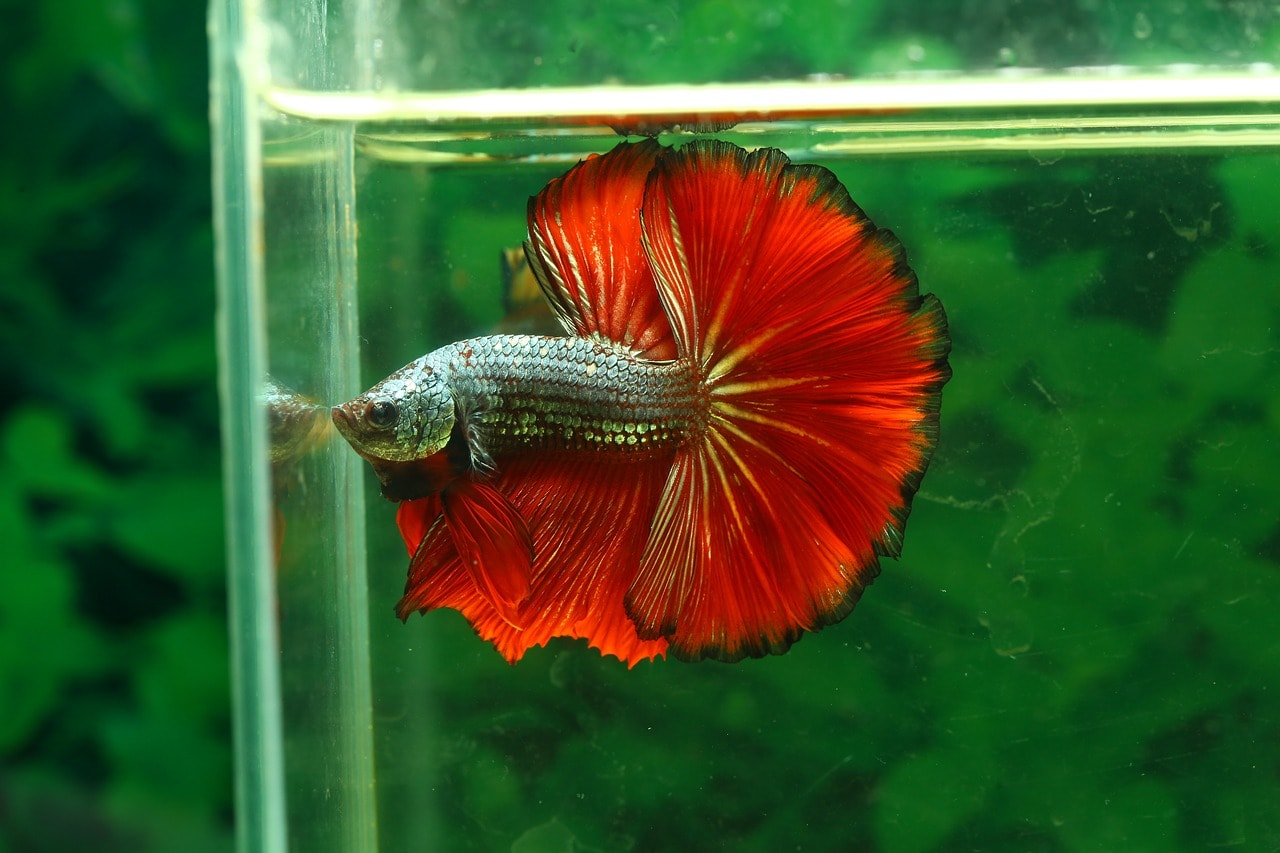
2. Water Temperature Difference
Betta fish may be angry and fierce-looking, but don’t let that fool you into thinking they are tough and hardy when it comes to water conditions.
They are ideal tropical fishes that require warm water temperatures of around 75 to 86 degrees Fahrenheit to thrive and be happy. Anything outside this range can stress them severely and result in death.
Water that falls below 75 degrees can cause temperature shock to a betta. It’ll slow the body’s metabolic rate, cause it to stop eating, and become extremely lethargic. These conditions will prevent circulation due to inactivity, which can trigger diseases like fin rot.
On the other hand, goldfish prefer cold water, with temperatures between 65 and 72 degrees Fahrenheit. Higher temperatures of over 72 degrees can make goldfish sick due to increased metabolism. These fishes require different water temperatures to survive, the reason they can’t be tankmates.
3. Water Hardness
You can determine whether water is hard or soft depending on its mineral content. Fish require minerals in their water a part of their nutritional needs, but not all species share the same mineral preferences and tolerance rates.
For instance, bettas flourish in soft water with almost no calcium and a water PH level of close to 7.0. The lower the calcium amounts, the lower the P.H. level, and the happier the betta. However, goldfish prefer aquariums with higher calcium content and a higher PH level of 7.2 to 7.6.
4. Goldfish are “Too Dirty” for Bettas
Goldfish emit too much waste that increases ammonia level in the water, making them “dirty” creatures. This is because they lack stomachs, so anything they ingest straight through the fish to the water.
For this reason, the tanks require a proper filtration system that can control the nitrogen cycle and manage the waste. Pet parents also require to replace the water frequently to keep the tank clean, a process that can stress out a betta and affect its immunity eventually.
Plus, bettas are generally clean and do not do well in dirty water. As a result, they are extremely sensitive to ammonia, which means the elevated levels can cause ammonia poisoning and kill them.
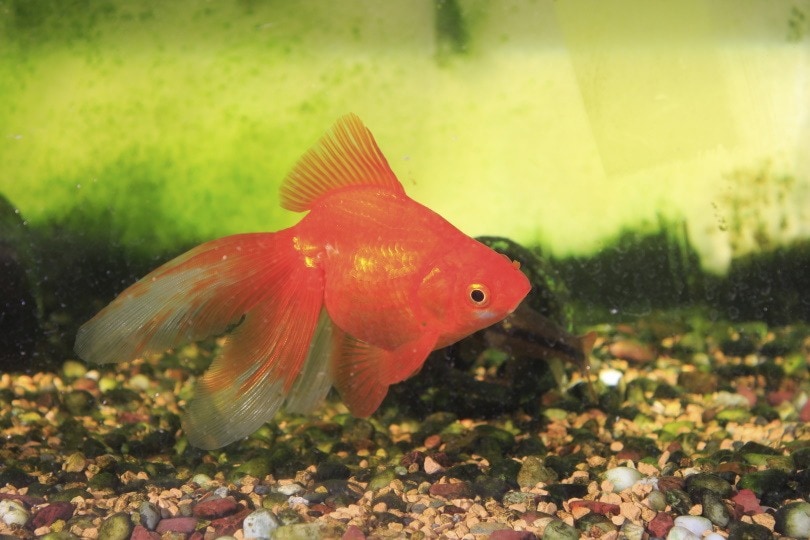
5. Goldfish Require Big Aquariums
If you have a betta fish, you must be housing it in a roughly 5–10-gallon tank. Bettas are small in size, growing up to 2 or so inches, so such tank sizes provide it with enough space to thrive.
However, goldfish can grow up to 6-8 inches in captivity and 12 inches in the wild, requiring larger tanks, not less than 20 gallons.
The size difference means tank decor like hideouts, plants, caves, and ornaments that suit a goldfish won’t work for a betta, a factor that is vital for a fish’s lifestyle.
6. Water Flow Rate
A Goldfish’s tank requires a reasonably strong water flow to ensure a sufficient circulation rate through the filter system. This is essential to keep the water clean.
While the goldfish does just fine with a high flow rate, your betta does not like strong water movement. These fish species have long flowing finnage that looks spectacular, but it does not help with swimming for the most part.
A betta will struggle to swim in stronger water currents thanks to the heavy fins. Living in an environment that inhibits its movement and being constantly buffeted from side to side by the water will stress it. It can expose it to health problems.
7. Bettas Are Small Fish
As you may have noted earlier, a goldfish is bigger compared to a betta. Goldfish are omnivores, and it’s just not a good idea to house them with small fish that can fit inside their mouths.
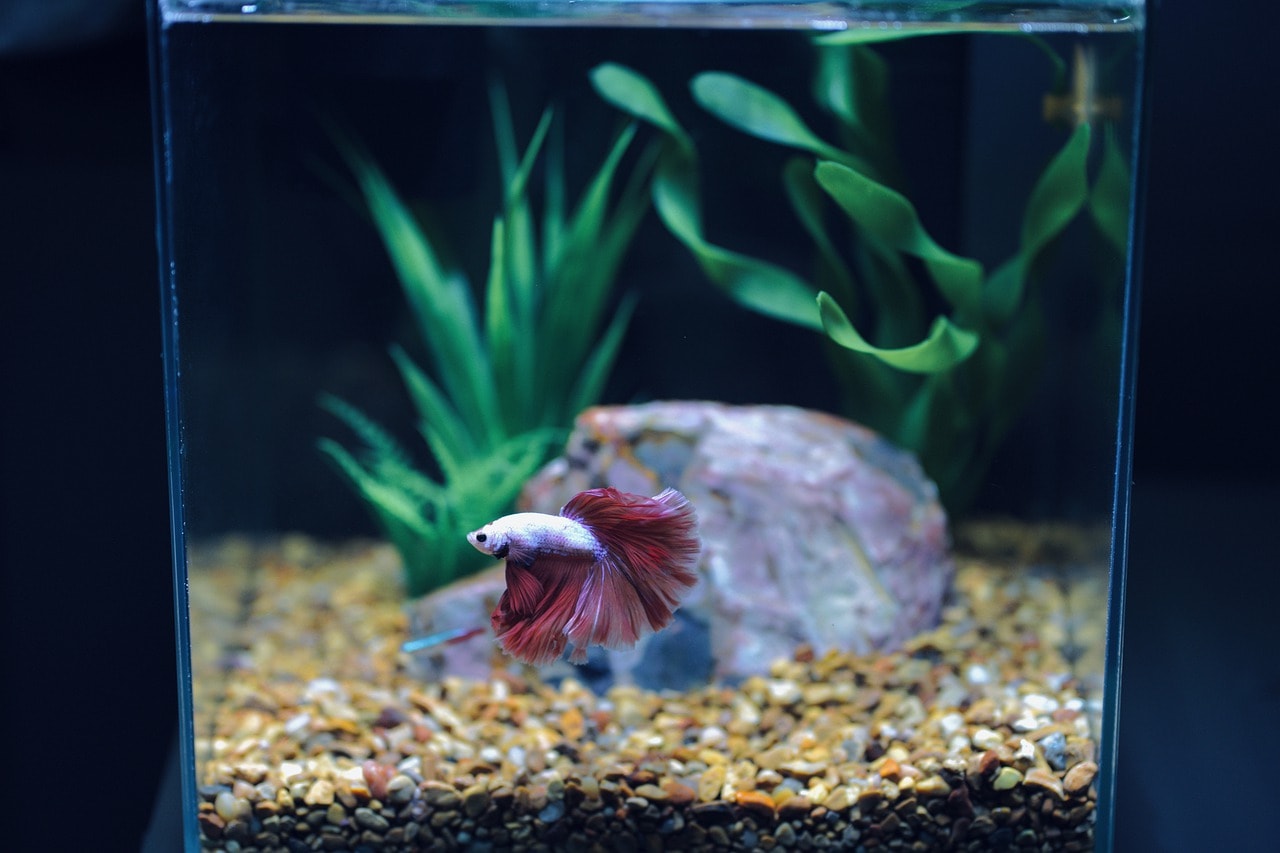
8. Goldfish Eat Quickly & Indiscriminately
Bettas are carnivores and aren’t too fond of plants. These fish species require more proteins in their diets, so they prefer chomping meats down more.
On the other hand, goldfish are omnivores have no problem devouring a nice mix of plant material and meat. They are also fast opportunistic feeders and can eat just about anything you provide, including betta’s food.
They may starve your betta. Worse still, the two species differ in diet requirements; feeding bettas goldfish food or vice versa will potentially harm them. For example, the betta could consume too much vegetation than they should while the goldfish too much meat, leading to diet imbalance and potential health problems.
Can You House Bettas and Goldfish Together Temporarily?
You can temporarily keep the duo in the same aquarium, only if the situation is dire. For example, maybe the betta’s tank heater failed, so you place it in a goldfish aquarium as you repair it.
This shouldn’t be a long-time thing, and it’s HIGHLY not advised. However, you can set up a standby transfer tank or take one to a vet’s tank if you have to swap either of them.
Don’t just place them together for convenience, as one may end up severely injured, ill, or dead!

Summary
You have no reason whatsoever to keep a betta fish and a goldfish in the same enclosure. These fish species have different needs and can be generally hostile towards each other.
You can only allow them to share temporal housing if the situation warrants it.
Related Read: Can Two Female Bettas Live Together?



Không có nhận xét nào